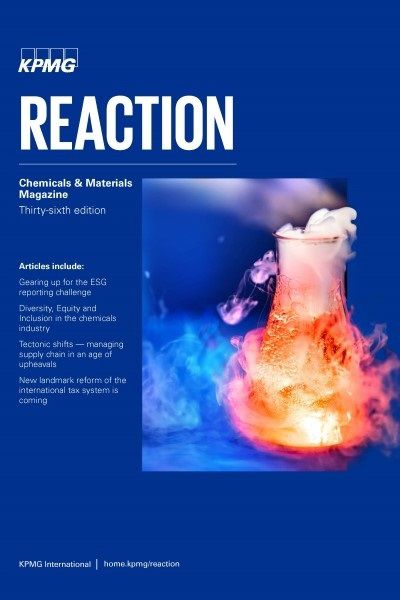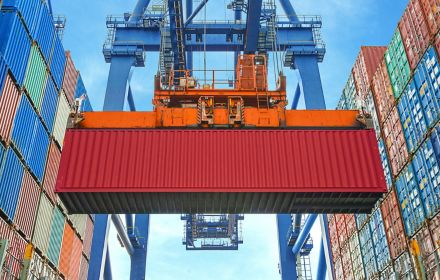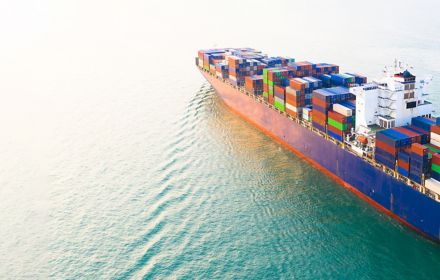One of the most prominent issues on the minds of boardroom executives right now, is supply chains. What was already a highly challenging situation due to the global COVID-19 pandemic has been dramatically accentuated by the conflict taking place in Ukraine and seismic geopolitical shifts, whose ramifications could be felt for decades
COVID is not finished yet
Across industries and sectors, the disruptions caused by the COVID-19 pandemic created almost unprecedented challenges in the procurement, supply and distribution of goods and materials. Old and trusted pathways suddenly became beset by uncertainty and delay. Lockdowns and additional safety measures blocked off or significantly slowed down trading routes. The labor needed to keep supply chains running became a scarce commodity.
A mark of the size of the impact was visible in the KPMG CEO Outlook 2021, where supply chains were the joint number one risk on chief executive radars. In standard times, the supply chain was rarely mentioned – it was simply a given that the mechanisms were in place to deliver a regular and reliable supply of goods all along the value chain. The survey found that CEOs have been spurred to get on the front foot and bolster the resilience of their supply chains, with 67 percent saying they will increase investment in disruption detection and innovation processes.
The pandemic was terrible enough, but a whole new test has been layered on top through the war in Ukraine. No one knows how long it will last – but its ripple effects may be felt for a long time, no matter how short- or long-lived the military action itself proves.
We'll discuss Ukraine shortly – but before we get onto that, the first thing to note is that the effects of the pandemic aren't over yet. Supply chains are still very fragile as we emerge into the recovery. And in some parts of the world, COVID-19 is still a factor – most notably in China.
At the time of writing, there is a complete lockdown in force in Shanghai, and authorities are grappling with outbreaks in Beijing's capital. Before that, there was one in Shenzhen, a technology hub and home to the Port of Yantian, the fourth-largest container terminal in the world. China is fundamental as a driver of the global economy as a key producer and exporter of many goods and commodities. As it pursues its zero COVID approach, lockdowns could remain a feature for some time to come, clogging up the flow of goods into global supply chains and causing knock-on effects elsewhere – particularly in the chemicals and materials industry which supplies a myriad of products into downstream industries, many of which have seen factories closed recently due to the lockdowns. In short, COVID is still very much a reality that organizations have to deal with.
Military conflict in modern Europe
Then, the Russian invasion of Ukraine. This has had multiple impacts and hugely exacerbates the existing fragility: a perfect storm. Notwithstanding the human impacts, it is creating physical disruptions in Ukraine and, to an extent, Russia. The two countries are hugely influential in the supply of food staples such as barley (30 percent of global supply), wheat (28 percent), and corn (15 percent). They are also significant exporters of fertilizers. So the impacts on food security and agriculture will likely be felt globally. Furthermore, Russia is a major exporter of many essential metals and minerals, including nickel (used in car batteries, for example), palladium (exhaust systems), aluminum, titanium and iron. The NATO block on buying from Russia has also impacted global supplies, driving up demand from other parts of the world and raising costs.
Also significant is the disruption – and political tensions – around the oil and gas supply. Russia is the world's third-largest oil producer and the second-largest gas producer. While oil and gas prices were already rocketing as demand spiked in the post-pandemic recovery, the war has only increased prices, exacerbating broader inflationary trends. Western countries have severed – or are planning to sever when feasible – their Russian oil and gas purchases. The commodity price spike is raising the cost pressure on multiple industries – including chemicals, where anything from half to three-quarters or more of the cost of a product can be the base hydrocarbon used and the energy costs in production.
The supply chain challenges created by the Ukraine conflict are threefold. Firstly, there is the physical disruption to production in the two countries and distribution networks in the surrounding region. Secondly, are the sanctions that are being applied to Russia and Belarus. Organizations must be cautious not to breach the rules, which can be complex when value chains are long and multi-party. But there is also a third layer – self-sanctioning. Many organizations don't want to run the legal and reputational risks that can arise from perceived sanctions breaches and have voluntarily pulled up the drawbridge. We have seen the CEO of Shell apologizing for buying a batch of Russian crude oil even though that wasn't technically on the sanctions list. BP exited a strategic program in Russia with a write-off of approximately $20 billion, while Exxon Mobil withdrew from a significant venture with Gazprom.
In general, the room for businesses to be apolitical seems to be shrinking. Companies are responding to calls to provide humanitarian support and divest from Russia. Even beyond the crisis in Ukraine, we believe that ideological, cultural and political rifts across and within nations are on the rise and will be forcing businesses to take more political stances that may make or break market development opportunities.
See this on-a-page KPMG summary here of key, sector-agnostic supply chain considerations arising from the Ukraine conflict.
Chemical reaction
Organizations will have to focus intensely on augmenting supply chain resilience in the chemicals industry. Transportation issues – that were already a problem – are being exacerbated. Port slowdowns or shutdowns, the continuing lack of availability of port workers, shipping crews, road and rail drivers, the rise in container costs, and the substantial lead times now involved making logistics and distribution harder, slower and more expensive.
But perhaps the most pressing issue is cost. Bulk chemicals are susceptible to input commodity prices – it is difficult to offset the jumps in the cost of oil and petroleum. Therefore, businesses have to ask themselves how to pass on cost increases to their customers equitably. There is less pressure on specialty chemicals and products, but margin erosion is here.
Geopolitical shockwaves – an unraveling of globalization?
Here we come to another factor that is making itself felt worldwide: inflation. Most developed economies are experiencing inflationary rates not seen for decades. Central Banks are raising interest rates to attempt to dampen this. The danger is that we may enter a period of stagflation – economic stagnation accompanied by rising prices: the worst of both worlds.
Where the global economy will head as the crisis in Ukraine continues, no one knows. But it seems evident that we are entering a 'new world order' where global geopolitics has momentously shifted. At a macro level, further economic decoupling between the West and China persists. This was already the case before the Russian invasion of Ukraine but feels significantly more entrenched now. We are likely to see a progressive movement away from what has arguably been a universalist, liberal order underpinning the world since the Cold War towards what we envisage to be a more insular, interventionist approach where countries prize national security and domestic resilience over economic integration-free trade. This may apply mainly to the security of the supply of energy, natural resources, technology, pharmaceuticals, critical minerals and other industries deemed a national security priority. In our view, the mantra will no longer be about pursuing free and open trade so much as protecting national interests, building self-reliance and self-sufficiency, and redrawing supply chain networks to support this.
Indeed, we could go so far as to say that we're likely to see a partial unraveling, or at least a significant recalibration, of globalization itself. This has all been coming but has been made much more real by recent events in Ukraine. A prescient white paper published in early 2020 by colleagues from KPMG in the US, Supply Chain's New World Order, explored this possibility. Now, the mantra can shift even further toward the philosophy described in the paper: "Make where you sell and buy where you make."
Environmental transparency and compliance
As if dealing with all of these factors wasn't enough, there's a further pressing consideration that chemical businesses must also address – environmental transparency and compliance.
In today's global economy, environmental risks, impacts, responsibilities and opportunities are the fundamental building blocks in the supply chain. More and more businesses have continuously been working to achieve net zero CO2 emissions and are making environmentally conscious purchasing decisions. Investors, stakeholders, customers, and authorities care about its environmental performance and disclosure.
There have been significantly increasing demands for environmental transparency in the past few years. In capital markets, we have seen some key stakeholders, such as the International Sustainability Standards Board (ISSB), the US Securities and Exchange Commission (SEC), and Hong Kong Exchanges and Clearing (HKEX) propose rules to enhance and standardize climate-related disclosure. One of the key enhancements offered is to include Scope 3 emissions (indirect emissions other than imported energy), for which an organization would have to manage "cradle-to-gate" or ideally "cradle-to-grave" carbon information across the supply chain. In the procurement area, we have seen more and more vendor engagement programs requiring upstream suppliers to provide carbon emission information for their products.
In 2021, the EU proposed expanding the Emissions Trading System's scope (ETS) and introducing a Carbon Border Adjustment Mechanism (CBAM) to mirror and complement the ETS functioning on imported goods. Under ETS, CBAM or the like, businesses may have to declare product-level carbon emissions information and bear a direct cost in emission permits. We envisage a future world with ETS and CBAM universally and broadly adopted. We may imagine carbon emission documents for every international shipment and carbon footprint labels on every consumer product.
This is a pressing supply chain challenge that should not be put aside.
Taking supply chain action
What practical steps can chemical businesses take to manage supply chain issues in this tough and geopolitically challenging time?
One of the first key elements is to achieve end-to-end supply chain visibility. This means mapping out and understanding how your supply chain works – linkages, interdependencies and pinch points. It may involve a Supply Chain Resilience Assessment, after which an organization is better able to answer critical questions, such as:
- Where do we/should we source our products and services from?
- How much should we buy, and when should we buy it?
- What inventory do we need to hold?
- How exposed are we to conditions and developments in different geographies worldwide?
- How do we ensure that we continue to serve our most profitable customers?
- How does our supply chain network need to evolve as we amend our flows?
Many organizations have taken significant decisions recently, not merely cosmetic ones: switching suppliers, changing manufacturing sites, opening new distribution centers and warehouses, and adjusting international product flows. This may also involve diversifying input sources by adding new locations and onshoring some operations.
The power of digital
Another critical element is digital and data enablement. . Bringing digital enhancements such as process automation into parts of your supply chain can increase resilience, agility and speed. The convergence of value preservation agendas with data science advances has led to a new supply chain discipline, predictive supply chain management. This merges data engineering, economic modeling, root-cause analysis, real-time simulations, and ongoing monitoring components. The objective is a granular level of visibility into exactly where value is made, lost, or exposed to potential risk – throughout the supply chain. This level of transparency is attained for every unique SKU (stock keeping unit), customer, order, facility, raw material – and combination thereof. At their most visionary, these platforms are intended to calibrate end-to-end economic value impacts in real-time, giving the supply chain the enterprise-specific insight to prioritize contingency planning.
Digital solutions make cost and profitability analyses more manageable and more powerful. Analyzing input costs has become more challenging in today's world of recycling, mixed inputs and mixed manufacturing methods. But today's technology can help you identify the profitability profile of different portfolio parts and who your most profitable customers are. Keeping a constant handle on this as conditions change and develop has become essential. Spend analytics tools and software packages increase the visibility of where, how and when your organization is spending. Consolidation of spend enables improved buying leverage and negotiating power to help drive value or push for improvements.
With costs falling, it is also becoming more feasible and affordable for organizations to introduce digital applications such as Software-as-a-Service (SaaS), blockchain solutions for vendors, and customer engagement programs to help measure environmental emissions information in the supply chain. With such technology in place, it is possible to ensure the quality of the carbon emission and other environmental data provided by your vendors, roll out a program to collect environmental information from your customers (or even end consumers) or introduce specific inter-organizational certification mechanisms for the avoidance of double counting or certain regulatory requirements under ETS, CBAM or some other carbon mechanism.
Nimbleness in an unpredictable regulatory landscape
Automated tools can also help your business remain compliant in a quickly changing regulatory environment. Through KYC (know your customer) tools and screening and compliance applications for customers and third-party suppliers, you can quickly be alerted to issues and increase the agility needed to make changes. This may include forming new supplier partnerships and other collaborations that can improve your organizational ability to shift depending on the need.
In today's landscape of sanctions, lockdowns, tariff wars and geopolitical trade tensions, technology has become a crucial tool to being flexible and agile enough to navigate a path and keep supply chains resilient. While in an inflationary world, it can also help the business drive efficiencies and reduce costs.
As the war in Ukraine has also underlined, reducing your exposure to cyber security threats will remain vital across your supply chains and third-party providers. Preventive actions can include heightened network monitoring, drilling for cyber-attack scenarios, searching networks for threats, and penetration testing, among other techniques.
Different businesses will be at various points in the journey regarding digital enablement – but no matter where you are, you should have it as a priority to build your capabilities. Price points for some advanced technologies have come down, while solutions have become more powerful and sophisticated. As the cost barriers have lowered, new market entrants have proliferated, offering comprehensive transformation platforms that integrate multiple supply chain technologies. AI-as-a-service (AIaaS) offers have joined them as delivery model alternatives.
How KPMG can help
We recognize that business leaders don't only need solutions; they need reliable advisers. Our 2,000+ supply chain, strategy and value chain management professionals from the KPMG organization of firms worldwide – working closely with our wide array of chemicals industry specialists and our geopolitical expert analysts – can help you address the issues of today, from crisis response planning to rapid diagnostic for supply and demand risks across your operation to scenario analysis and contingency planning. Our professionals are skilled in all areas of supply chain operations, from strategy and analytics, supply chain risk, planning and execution, and logistics and distribution. We also can help you integrate tax planning into your business operations to help minimize expenses and risk, enhance return on investment, and drive efficiencies across operations.
One part of the solution could be KPMG Powered Enterprise | Supply Chain – an outcome-driven, cloud-based solution designed to support your organization in organizing a complex, dynamic supply chain. It helps you better meet customers' demands and respond to market changes while maximizing efficiency gains both now and in the future. A helpful jump-start to your digital transformation, enabled by technology and real-time insights.
KPMG has developed a leading global Climate Change and Decarbonization practice to deliver leading solutions to clients. Most importantly, we do not see ourselves as mere consultants. KPMG professionals want to work collaboratively with clients on a low carbon future journey.
Get in touch
Related content
The email address you've entered is already tied to an existing account. Please enter your password to log in.
KPMG thought leadership is always available to our registered users
You’ve successfully logged in.
Please close this pop-up to return to the page.
Please provide the following information to register.













